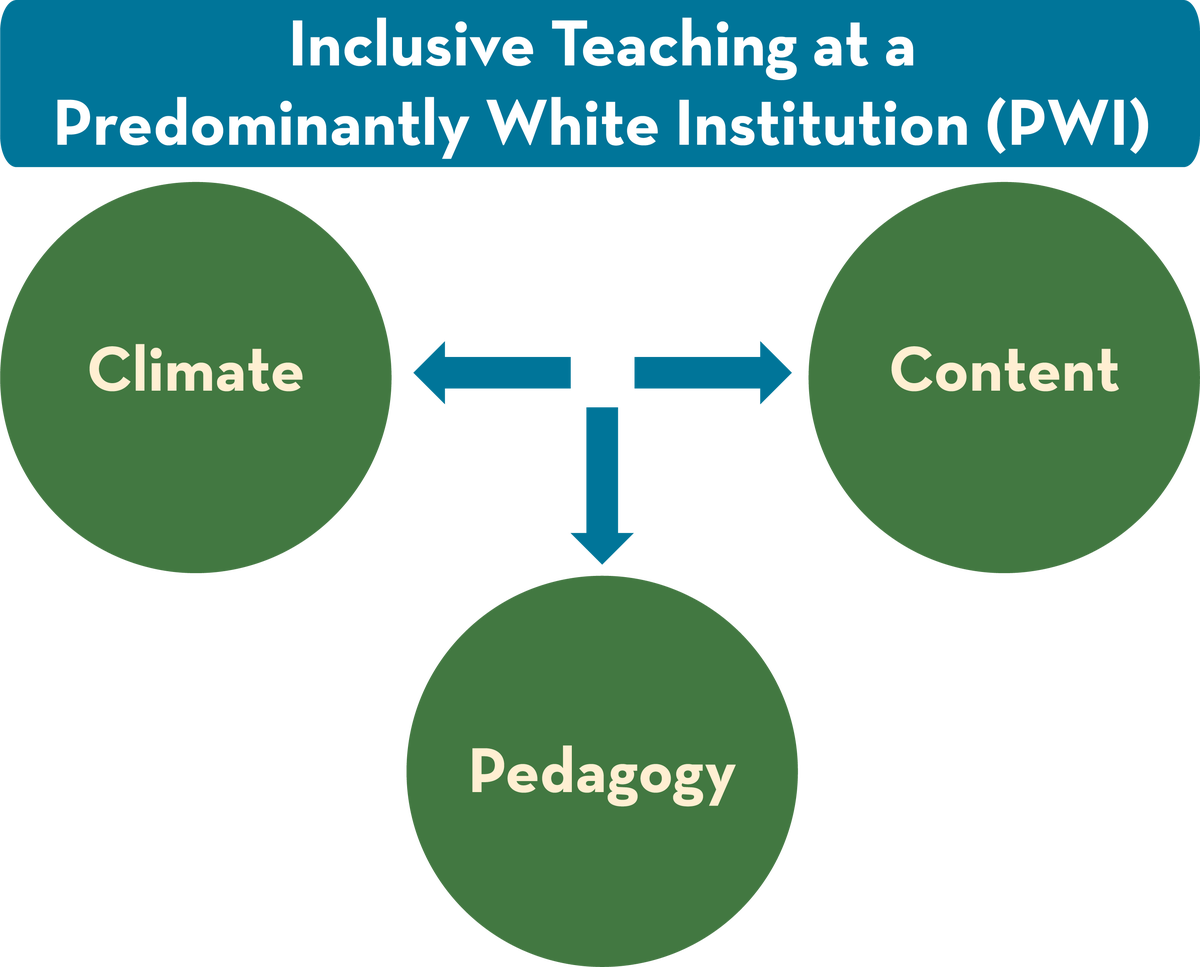
This guide introduces a basic framework for “Inclusive Teaching at a Predominantly White Institution (PWI).” While there are different dimensions to inclusion, including the intersectionality of multiple aspects of identity (such as gender, social class, disability status and others), this guide focuses on the racial and Indigenous dynamics of inclusive teaching at a PWI. We recognize that many instructors and students find it challenging to work with racial and Indigenous dynamics and content. We designed this guide to provide definitions, key ideas, PWI assumptions, core concepts, suggested teaching practices, and references so that instructors can develop their capacity for inclusive teaching in ways that fit their teaching contexts.
Inclusive Teaching at a PWI - A Working Definition
Inclusive teaching at a Predominantly White Institution recognizes that PWIs are designed to support the learning of predominantly white students and the teaching practices of predominantly white instructors. In light of this, inclusive teaching at a PWI acknowledges this context and reveals how “taken for granted” teaching practices may exclude, hinder, or limit BIPOC (Black, Indigenous, and people of color) students from meaningful learning. Inclusive teaching at a PWI promotes teaching practices that question PWI foundations and creates alternatives to support learning for BIPOC students as well as white students by working with rather than denying the dynamics of race and Indigeneity.
Topics
- Definitions and PWI Focus - There are No “Best Practices”
- A Flexible Framework - Inclusive Teaching as a Dynamic System and Through the PWI Lens
- Class Climate - Understanding the Differential Experiences of Your Students
- Pedagogy - Diversifying Your Teaching Methods, Learning Activities, and Assignments
- Course Content - Auditing and Diversifying Your Content
- Inclusive Teaching at a PWI - An Ongoing Endeavor